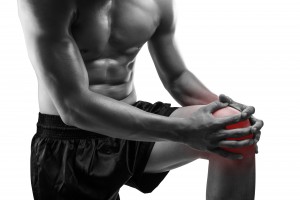Sore Muscle Pain?
As a personal trainer, a common question I hear from clients is about managing muscle soreness, especially at the onset of a new training routine. It will also sometimes come up when a client is training for a marathon or triathlon and pushing themselves extra hard, or training more frequently than normal. I anticipate these scenarios as a personal trainer, and frequently counsel clients about sore muscle prevention to avert any mishaps, especially if I know they haven’t worked out in a long time, or are heading into intensive training to reach a goal or milestone.
Injury Prevention
Prevention involves being smart about your body and your exercise routine.
Properly fitting shoes, most importantly for running, but also for weight and personal training sessions, go a long way toward preventing shin splints, hip pain, and even lumbar discomfort. Cross training shoes that provide proper side and impact support are optimal for weight training sessions and cardio sessions, which I often include in my personal training appointments. This type of support mainly helps protect against foot and ankle injury.
Improper form or too much weight during a lifting session can stress muscles to the point of over exertion and pain. Going to an open gym on your own shows you have great motivation, but it’s only half the battle. Faced with an enormous room full of equipment and not knowing how each operates can be intimidating, not to mention dangerous. In a one-on-one personal training session I can fine tune the small details of a client’s form, whether it’s their stance, grip on a machine or arm and leg positioning. It may sound surprising, but just a slight adjustment can mean the difference between a great workout and great pain. This is especially true when lifting too much weight. After the first one or two reps, I can instantly tell whether a client can press on and handle the weight, or if the amount will stress them to the point of injury. As a personal trainer there are certain cues that I look for in the hundreds of different exercises I use, and because of my years of experience, I know when to encourage and push, and when to back down on the weight. This is essential to the overall health and progress of my clients.
Muscle Pain Management
It’s just a fact of life that injuries do happen however, and I have five key components to a successful recovery that are very effective.
1. Soak in a hot tub – The warm water will soothe the muscles and relax them.
2. Hydrate, hydrate, hydrate – Dehydration can make muscle soreness more painful (not to mention cause hunger and light headedness). Drinking adequate amounts of water also helps flush the toxins out of your system.
3. Sleep, sleep, sleep – Your body goes into recovery mode when you sleep. When your body isn’t moving, it can repair muscles more easily. Your body also synthesizes protein when you sleep, another essential building block of muscle repair.
4. Stretch – Speaking of toxins in the system, gently stretching sore muscles will help break down the lactic acid that builds up after exercise and makes muscles hard and sore.
5. Work Out – On a scale from 1 – 10, with 10 being the worst pain, if you are an 8 or above; take the day off. If you are at a 7 or below, go ahead and work out. Both working out, and a light cardio session will increase the blood flow to the sore muscles, which helps break up lactic acid; the main culprit of muscle soreness.
